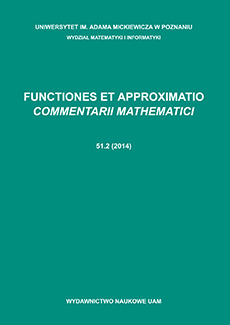Let $F(x_1,\ldots,x_m) = u_1 x_1 + \cdots + u_mx_m$ be a linear form with nonzero, relatively prime integer coefficients $u_1, \ldots, u_m$. For any set $A$ of integers, let $F(A)=\{F(a_1,\ldots,a_m): a_i \in A for i=1,\ldots,m\}.$ The {\it representation function} associated with the form $F$ is $$ R_{A,F}(n) = \card ( \{ (a_1,\ldots,a_m)\in A^m: F(a_1,\ldots, a_m) = n \} ). $$ The set $A$ is a {\it basis with respect to $F$ for almost all integers} if the set ${\bf Z} \setminus F(A)$ has asymptotic density zero. Equivalently, the representation function of a basis for almost all integers is a function $f:{\bf Z} \rightarrow {\bf N_0}\cup\{\infty\}$ such that $f^{-1}(0)$ has density zero. Given such a function, the inverse problem for bases is to construct a set $A$ whose representation function is $f$. In this paper the inverse problem is solved for binary linear forms. for binary linear forms.
Funct. Approx. Comment. Math.
37(2):
341-350
(September 2007).
DOI: 10.7169/facm/1229619658





